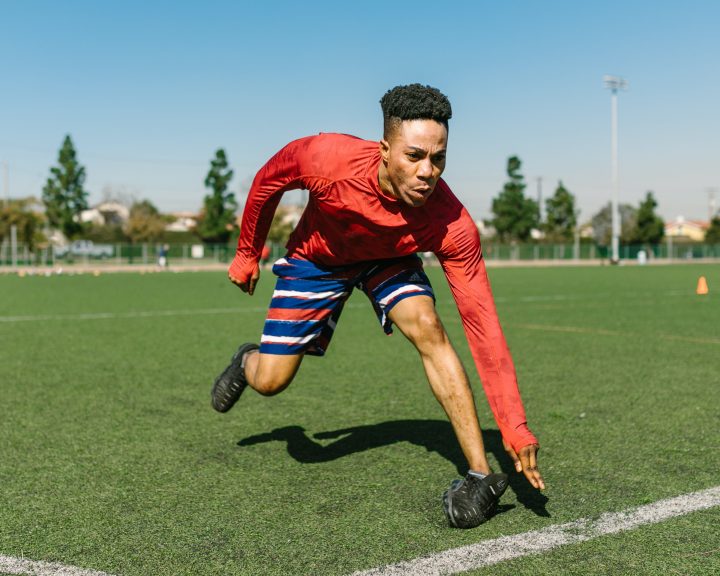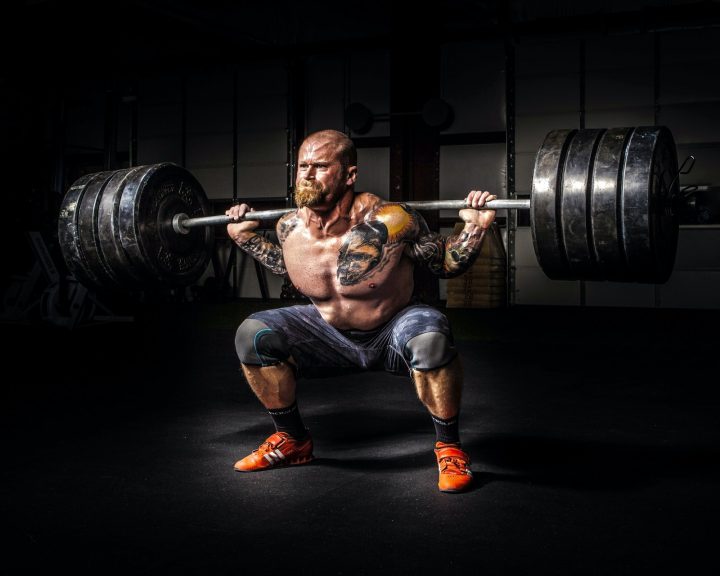In terms of strength, a number of things are thought to be important. The first is the size of the muscle, it should make sense that a larger muscle is potentially stronger than a smaller one. The second is the angle of the muscle fibers relative to the tendon. The greater the angle the more force production as more material can be fit into a given space. A third is the percentage of Type II (or fast-twitch) muscle fibers. These fibers are potentially larger, produce greater force, and do so in a shorter period of time than Type I fibers. In theory, all three of these things can be modified (size, angle) or developed (the type II fibers) through training.
De Souza, et al, in the December issue of the International Journal of Sports Medicine, looked at factors that impact maximal strength by studying the impact of height/weight, quadriceps cross-sectional area (CSA), and muscle fiber characteristics on one repetition maximum (1-RM) in the leg press in male college students.
On average, the students were able to leg press 361% of their bodyweight. Looking at the statistics, the strength of the students was influenced by the CSA of the quadriceps and the percent of type II muscle fibers. In other words, those students with larger quadriceps and more type II muscle fibers were stronger (which you would expect to see).
The authors then did something curious; they divided the subjects into two clusters. The first cluster was “high strength” and lifted ~293 kilograms. The second was “low strength” and lifted 254 kilograms. When analyzing the variables that impacted the totals by cluster, they found that:
1. Of the variables studied, the strength of the low strength group is influenced by quadriceps CSA and the percentage of Type II muscle fibers.
2. Of the variables studied, the strength of the high strength group was only heavily influenced by quadriceps CSA.
On the surface this would seem to indicate the importance of CSA for strength, which is the authors’ conclusion. Potentially, more muscle mass means the ability to lift more weight – which is the case in this study. However, I disagree slightly with this finding. The authors focus on the fact that the high strength group is about 13% stronger than the low strength group, which is true. However, the low strength group is also significantly lighter than the high strength group. When expressed in relative terms, the low strength group is lifting 367% of their bodyweight in the leg press versus 346% for the high strength group.
One other important point should be made about this study. The statistics performed indicate that muscle CSA and (in most cases) percentage of Type II muscle fibers were the only variables that were studied that influenced strength. In other words; height, weight, and muscle fiber number (the other variables studied) were not factors. But, the multiple regression models only explain between 25-38% of the differences in strength, which suggests that there are more factors out there that influence strength. This could include training history, volitional qualities, muscle fiber angles, limb lengths, tendon insertions, bioenergetics, etc.
de Souza, E.O., Tricoli, V., Paulo, A.C., Silva-batista, C., Cardoso, R.K., Brum, P.C., Bacurau, A.V.N., Laurentino, G., Neves Jr., M., Aihara, A.Y., and Ugrinowitsch, C. (2012). Multivariate analysis in the maximum strength performance. International Journal of Sports Medicine, 33: 970-974.



